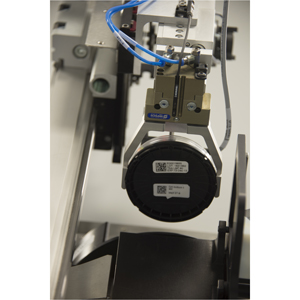blog
October 25, 2013 | Source: Rapid Micro Biosystems, Inc.
Achieving High Efficiency through Non-Destructive Microbial Enumeration
POSTED BY Rapid Micro Biosystems | 6 minute read
October 25, 2013 | Source: Rapid Micro Biosystems, Inc.
POSTED BY Rapid Micro Biosystems | 6 minute read
 When it comes to cutting costs and improving productivity in the pharmaceutical industry, nothing is more important than the elimination of redundant tasks. Highly trained, highly paid microbiologists are still performing some of the most mundane and repetitive procedures, and pharmaceutical companies that eschew automation are leaving a great deal of money on the table. Nowhere is this more true than in quality control, where most organizations are still using methods more than 100 years old for microbial detection.
When it comes to cutting costs and improving productivity in the pharmaceutical industry, nothing is more important than the elimination of redundant tasks. Highly trained, highly paid microbiologists are still performing some of the most mundane and repetitive procedures, and pharmaceutical companies that eschew automation are leaving a great deal of money on the table. Nowhere is this more true than in quality control, where most organizations are still using methods more than 100 years old for microbial detection.
Fortunately, automatic enumeration and reporting are now possible with cutting-edge imaging and robotics equipment. Techs no longer have to spend long hours counting colonies, sorting plates and recording data, so they're free to devote their time to the most critical investigations and interventions. Here are a few of the tasks that rapid enumeration can streamline or eliminate altogether.
Traditional enumeration requires microbiologists or other technicians to walk samples all the way from their manufacturing lines to quality control labs. On massive company campuses, this can mean hours spent in transit, gowning in and out of clean rooms, and traveling back to the lab for testing.
On the other hand, automated rapid detection can operate as a “self contained micro lab” with incubation, enumeration and reporting built into a single instrument. This self-contained unit can be located directly on the production line. Samples can be captured and then loaded into the technology. Testing and analysis can commence without the need to travel to the lab.
Automatic enumeration completely removes microbiologists from the colony counting process. The technician prepare samples using similar techniques as they would with the traditional method, attach barcodes that sync the samples to their LIMS and load the cassettes into an automated system. Advanced imaging can then detect the natural autofluorescence from still-microscopic colonies. This process works for most quality control applications, including:
Interim tests can be enormously valuable in hastening production and identifying and reacting to potential contamination events earlier. With traditional processes, however, interim tests strain the already stretched quality control team. Microbiologists must pull samples from incubators, perform the interim count, record those counts and return the plates. These tasks can take hours and increase the possibilities of misplacement and improper incubation.
Automating enumeration enables interim testing. Internal robotics and digital imaging technology perform counts every few hours as part of the automated enumeration process. Samples are removed from the incubator, their barcode is scanned, the imaging is performed, and the plates are returned to the incubator. This allows the technician to see the current CFU counts on samples as the test commences. In addition, should the sample reach an alert or action limit, Quality Control can be alerted immediately rather than waiting for the end of the assay.
In addition to the inefficient process of manual counting, traditional enumeration requires techs to enter their counts one-by-one into a LIMS or paper-based record system. Automation in counting also enables automation in data entry. Since each cassette is labeled with a LIMS-integrated barcode, counts are uploaded to the LIMs and available to stakeholders beyond the lab. Even in facilities without a LIMs, automated enumeration can generate comprehensive reports using system generated data.
Automatic detection reduces the chances of false positives and unnecessary out-of-specification (OOS) investigations. When investigations do occur, however, non-destructive rapid methods can also help QC personnel by providing a viable sample for further analysis, such as microbial identification, saving days. While a typical water test can take between 5-7 days to produce final results, automated imaging can detect growth in as few as 2.5 days. Overall, these capabilities lead to cheaper, more effective investigations and more manufacturing uptime.
To learn more about the benefits of automatic enumeration, download our free guide today.